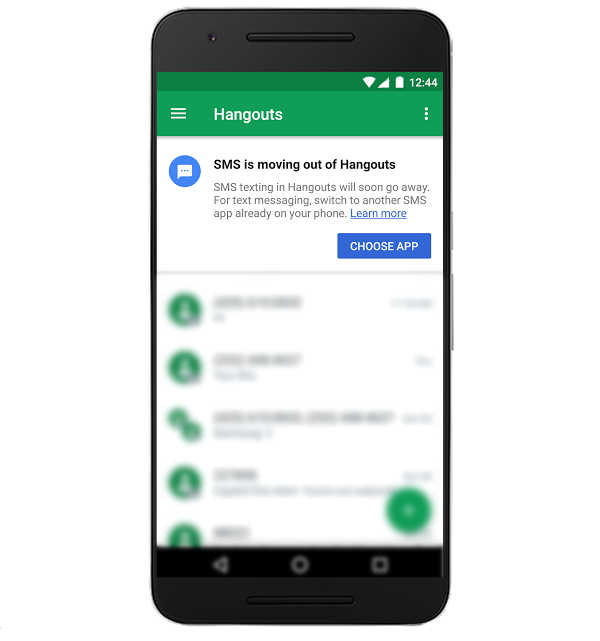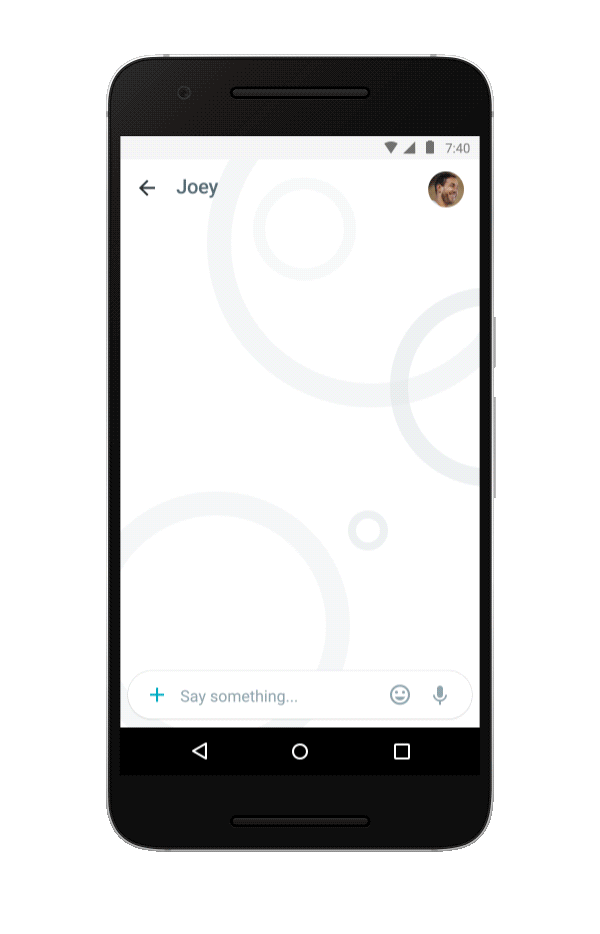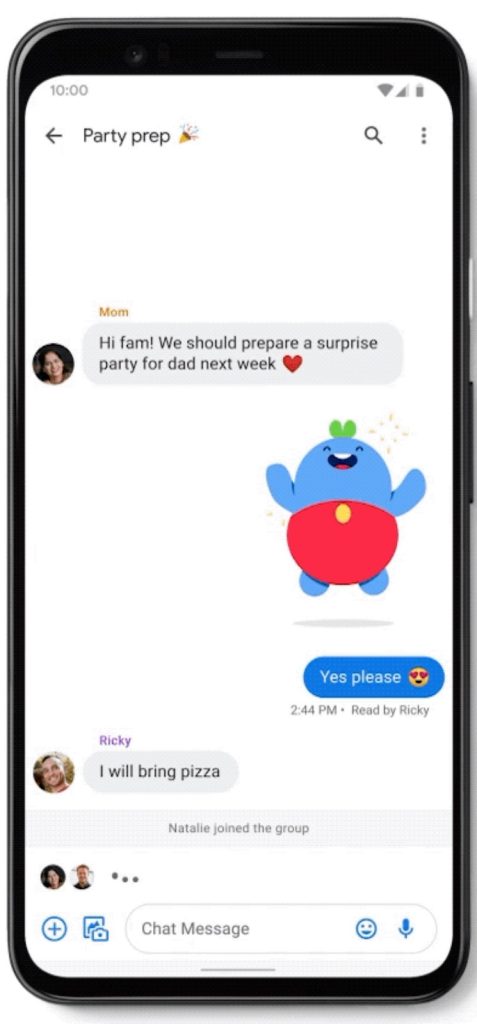
Messaging is a core part of any smartphone, and it’s something that Apple has really nailed with the iPhone and iMessage. Googlers have voiced their frustration recently over how Apple uses iMessage as a tool for lock-in and while Apple’s resistance to RCS and other cross-platform standards is certainly annoying, the context of Google’s countless failures in messaging don’t really help the company’s case.
Table of contents
What’s so great about iMessage?
Apple launched iMessage in 2011 alongside the debut of iOS 5. At the time, SMS and MMS ruled the industry, with trillions of text messages sent every year in the US alone. Those messages, too, came with charges from your carrier and complicated plans to manage the cost.
iMessage came as a solution to that problem, offering messaging over Wi-Fi or data using the same old phone number. The original selling point for iMessage was the ability to send messages without being charged, and higher quality when sending pictures and videos. If iMessage wasn’t available, whether that meant you didn’t have a stable data connection or were texting someone without iMessage, the app would automatically fall back to SMS/MMS. Another big perk was that it brought messaging to other iOS devices, including the iPad and iPod Touch.
Over time, though, iMessage has evolved with more features. A year after its debut, the service came to the Mac, and in the time since it has added support for message reactions, apps, Apple Pay, and many, many more features. But still, it remains exclusive to Apple’s hardware products, despite repeated calls for it to expand to other platforms.
Google’s history of messaging apps since the debut of iMessage
Google has been working on messaging apps for well over a decade, and plenty of those have come since iMessage’s arrival in 2011.
Google’s first real attempt to compete with iMessage came in 2013 with the arrival of Google Hangouts. The service, which was an extension of Google+’s messaging services, brought together Android messaging all in one place. It had SMS/MMS, it had Google account-based instant messaging over data, and it also had voice and video calls, powered in part by Google Voice. Hangouts even replaced the aging Google Talk, which had been popular for years before iMessage’s debut.
Truly, its promise was to be Google’s all-in-one messaging solution. And unlike iMessage, it worked virtually everywhere, with clients on Android, iOS, the web, smartwatches, and more.

In typical Google fashion, though, Hangouts launched to a rough start. Some of its promises, such as actually killing off Google’s other messaging services and being Android’s default SMS client, weren’t available on day one, but Google quickly improved the situation by pulling the plug on Google+’s Messenger service and bringing SMS support to Hangouts, and Google Voice wasn’t too far behind.
But, by 2016, Google was starting to look at other messaging strategies, for reasons no one really understands to this day. This included making Google Messenger (now Messages) the default SMS app on Android, the removal of SMS from the Hangouts app, and the real kicker, the launch of Google Allo.
2018 marked the “death” of Hangouts, when Google announced that “classic” Hangouts would be shut down in favor of its enterprise alternatives which were nowhere near ready for consumers.
In 2022, Hangouts technically still works, but it’s dead man walking. Google is pushing users towards Google Chat instead, and the Messages app for SMS. Google even went as far as rebooting Voice a few years ago, further cementing that the dream of an all-in-one messaging app was something Google was just entirely done with.

Where Hangouts was designed to be the one messaging app to rule them all like iMessage was, Google Allo took more of the WhatsApp approach.
Allo was a phone number-based messaging app with end-to-end encryption as one of its key selling points. Further, it served as the first introduction to Google Assistant and had a lot of clever features and fun stickers to boot. Following its Google I/O reveal alongside video app Duo, hype for Allo was high.

However, it ended up dying quickly after its launch because it was limited on features, only worked on Android and iOS and only one device at a time, and lacked SMS integration entirely. Plus, it had to deal with WhatsApp as its main competition, with no real advantages over that extremely popular service.
Allo ultimately was forgotten, and Google finally pulled the plug on the service in 2019, barely three years after its debut.
In 2018, Google started pushing for a new messaging effort, hopefully, one that would outlast the others. RCS — Rich Communication Services — was meant to be a replacement to SMS entirely on the backs of carriers signing on to the new technology. The technology itself had been around for a few years at that point, but with no clear direction. Some carriers had their own siloed versions of RCS, while others ignored it. Google stepped up with the goal of a universal RCS standard by way of Jibe, a company it had purchased years beforehand.
The delivery method for RCS was Google Messages, which took over as Google’s primary messaging app in 2019, combining traditional SMS with number-based RCS messaging. Like Allo, the system was tied to a single device, but as a standard it had the potential to work with other messaging apps and really unify everyone on one standard.
RCS’ journey in the time since has been… complicated, to say the least. The burden of actually implementing Google’s RCS initiative was originally on carrier partners rather than Google itself. But then, major US carriers blindsided Google with the announcement of their own RCS initiative in late 2019, which predictably fizzled out before doing anything just a couple of years later.

Google went forward and started making RCS available to every Android user on the planet over the course of 2019 and 2020, an initiative which has since been completed and even delivered end-to-end encryption. Of course, it does still require that Google Messages is the SMS app people are using, which isn’t always the case.
In 2021, carriers even started signing on to adopt Google Messages on the Android phones they sell in the US, essentially making RCS the default messaging experience across Android smartphones globally.
But still, RCS hasn’t been the perfect solution. SMS remains the fallback for RCS when Android users are talking to iPhone users, an issue that Google clearly has problems with. Still, Messages and RCS remain Google’s primary initiative for consumer-level messaging, even if there are half a dozen other options around.
Whereas iMessage is a central messaging app for Apple that works across platforms, Google has made countless messaging apps and services over the years. In fact, Google currently has nine messaging services in its portfolio as of 2022.
Looking back, Google has offered Talk, Voice, Wave, Buzz, Google+ Messenger, Hangouts, Spaces, Allo, YouTube Messages, Google Chat for businesses, Maps Messaging, Messages, Google Photos Messages, Stadia Messages, Google Pay Messaging, Google Phone messages for businesses, and Google Chat for consumers, and that’s not even to mention the video apps — Google+ Hangouts, video calls in Hangouts, Google Duo, and Google Hangouts Meet which is now finally known as Meet, and due to kill off the success that was Duo.
ArsTechnica has a fantastic breakdown of Google’s many messaging apps, and while some of these smaller apps make sense in their own way, it really shows how messy Google’s approach to messaging has been.
Will RCS be any different?
RCS has potential in ways previous Google messaging apps did not, and that’s because it’s a standard, not just a service. RCS is supposed to replace, at least for the most part, the aging and limited SMS/MMS standards that carriers still use and are still widely accepted as the standard in the United States. Other messaging platforms have taken over the rest of the world, but in the USA most users seem often unwilling to adopt those superior experiences and instead just use whatever is built into their phone, limited as it may be.
The goal of RCS, or at least Google’s push behind it, is to bring the better group chats, encrypted messages, better media quality, and more to the default messaging experience and make it better line up with what third parties like WhatsApp and Telegram provide. RCS has the potential to stick around indefinitely because it’s a standard that isn’t just on Google. Carriers and others have reasons to want RCS to be mainstream and on as many devices as possible and finally it seems like that is taking over.
RCS, given time, will probably succeed. The real question at this point is if Google will be happy with the final result, and if the experience will live up to what Apple has in iMessage, or even something like WhatsApp. That’s… a little harder to guess.
Author: Ben Schoon
Source: 9TO5Google



